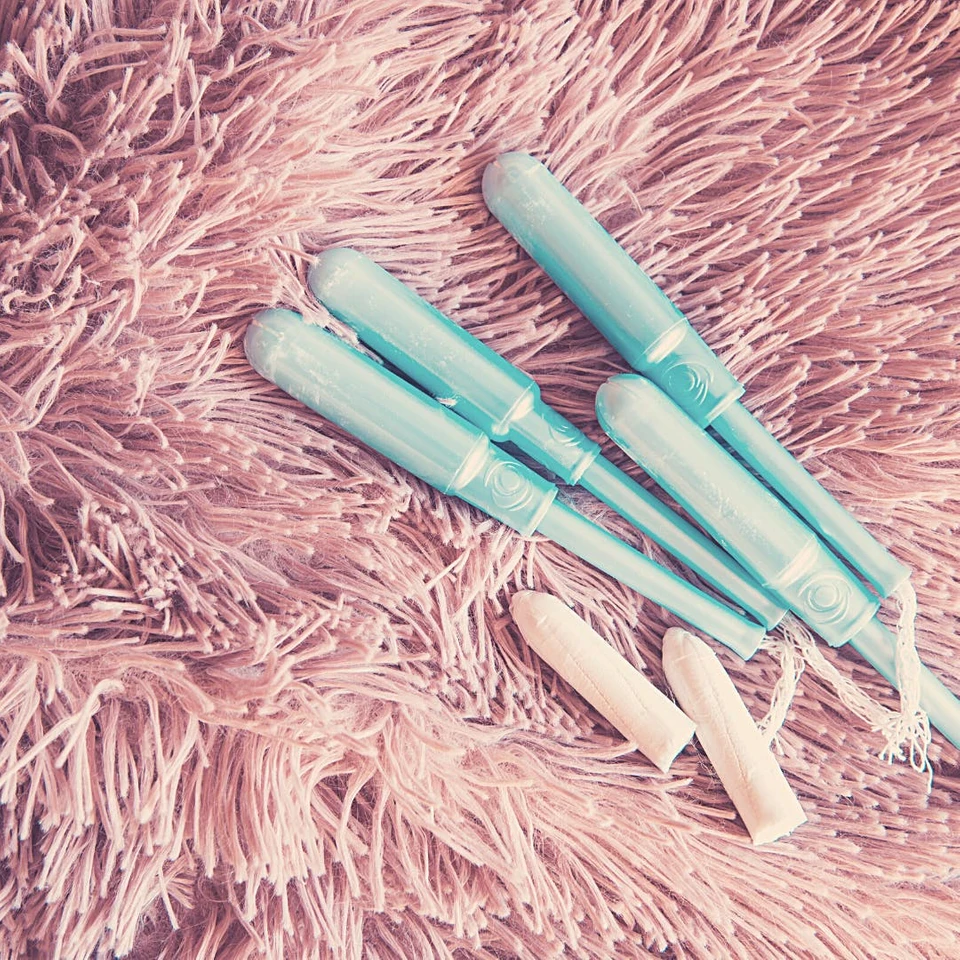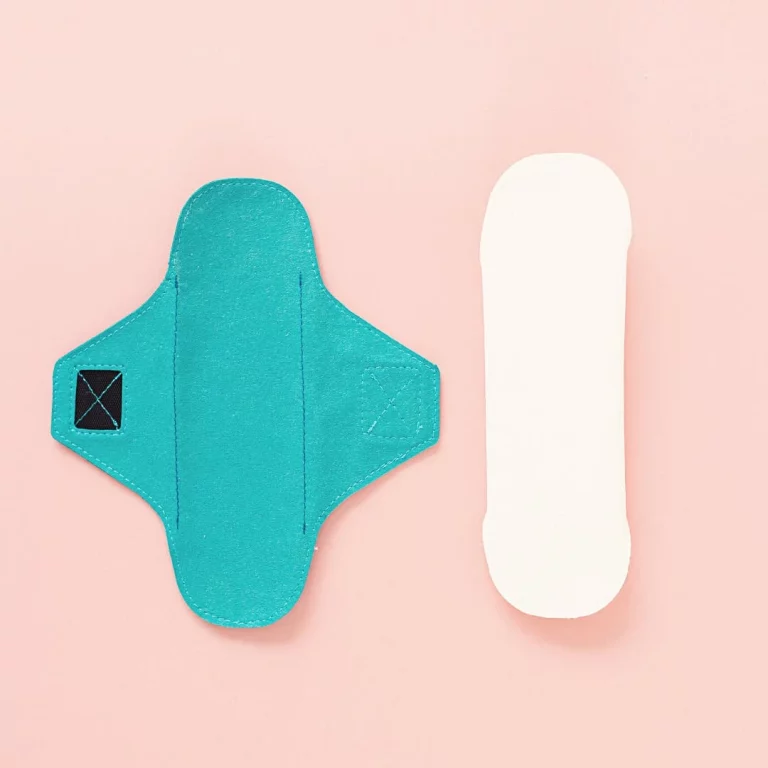How To Insert Tampon: 5 Step Beginners Guide
If it is your first time putting in a tampon, then this tampons for beginners guide should help. Tampons are a fantastic and convenient way to manage your period and menstrual flow. Once you master how to use the tampon, it is usually very comfortable, and most people do not even feel it.
Here is a step-by-step guide on proper tampon insertion.
How To Insert A Tampon In Your Body: 5 Easy Steps
If you want to also watch a video where Ob-Gyn Dr. Erica Montes discusses how to insert a tampon, check out the video on our Youtube channel.
How To Use The Tampon: Step 1 Find Privacy & Clean Hands
Find some privacy and play around with the tampon before you insert it. Be sure to wash your hands before using any menstrual product. If it is your first time inserting a tampon, the best way to get it right is to get familiar with the type of tampon.
Tampon Types
There are many different types of tampons. In the beginning, use the lowest absorbency tampons. These tampons tend to be thinner and will be easier to insert. A smaller tampon is also less likely to cause discomfort which could discourage you from using them. Tampon usage, when done correctly, should not be uncomfortable or painful.
Tampon Applicator Vs No Applicator
There are also tampons with different types of applicators or no applicator at all. Plastic applicators will also slide in more easily than tampons that have a cardboard applicator. Tampons without applicators can also be used, but it may be harder to get them into the right position in the vaginal canal. The tampon box will clearly show you what type of tampon it contains and looking at the box can help you pick the right size. Some tampons come in a tampon applicator. Other, more compact tampons are inserted without the use of an applicator.
Practice In Privacy
The right place to learn how to use a tampon is one that is private. This way you don’t feel pressured to leave so you can take your time. Applicator tampons generally slide into the vaginal opening easier than those without an applicator. Have 2 to 3 extra tampons so you can understand how the tampon leaves the applicator. It’s a good idea to have a few extra tampons handy. Especially in the first few months of tampon usage, you may end up needing a few backup tampons.
Before you even try to insert a tampon in your vaginal canal, play around with the tampon and see how the tip of the tampon comes out of the applicator. Some tampon brands do not come with applicators, and some do. The actual tampon is the cotton part, and the applicator is the plastic or cardboard part.
Pushing The Tampon Out Of The Applicator
Using your pointer finger, push the plastic applicator so that the tampon (the white part with the string) leaves the applicator. You will notice that as the actual tampon leaves the applicator the outer tube of the applicator will slide over the plunger or the inner tube.
When inserting the tampon into your vagina, you will push on the plunger part of the applicator. This will push out the tampon from the barrel part of the applicator. See the inserting tampon diagram below.
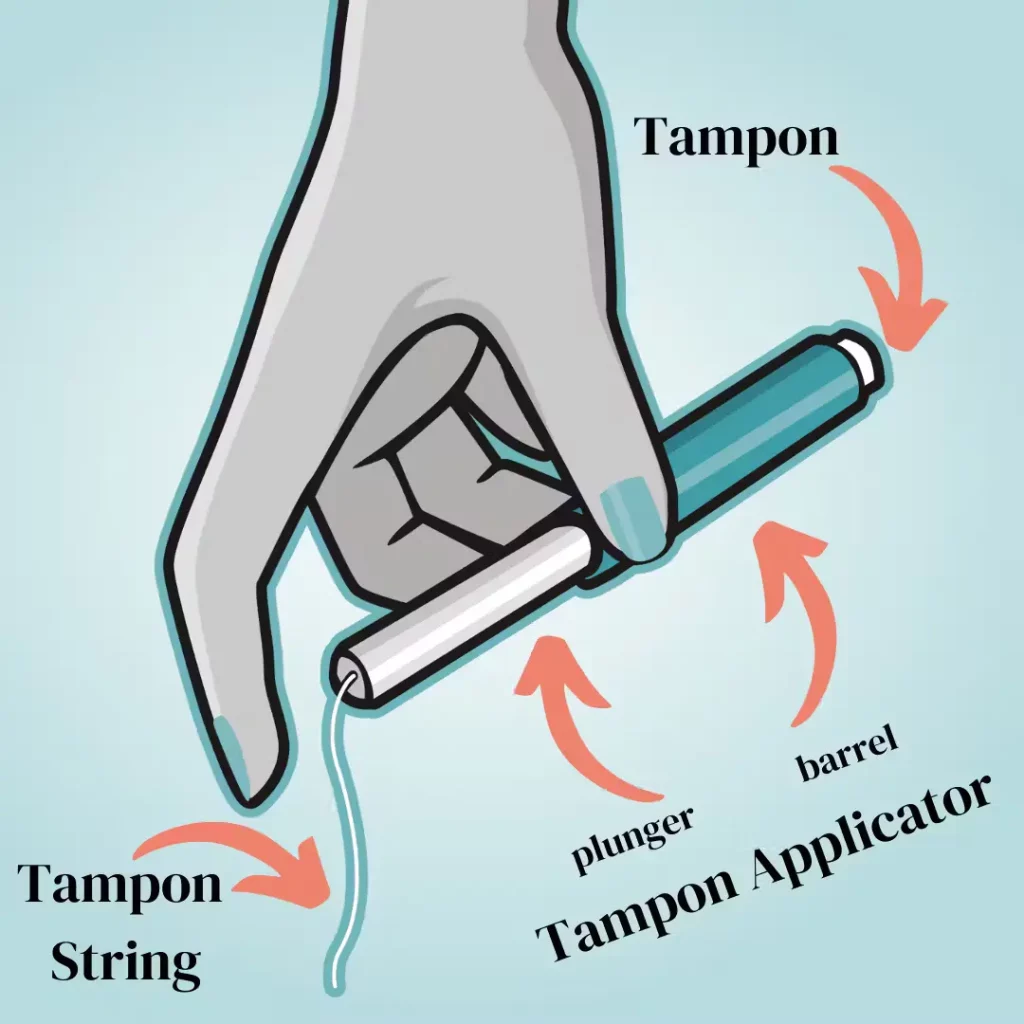
How To Use The Tampon: Step 2 Understand Vaginal Anatomy
Vaginal Anatomy
Find a comfortable position and try to insert the tampon into your vagina. The vagina is the opening that is between the urethra (where you pee) and the rectum (where you poop). It is where your menstrual blood exits your body.
Positioning For Tampon Insertion
You have to figure out what position works for you to get the tampon to slide in with little resistance. The good news is that with a little bit of practice, you will be able to insert a tampon without any trouble.
Related: Tampon Toxic Shock Syndrome
Some people find it comfortable to stand with their legs shoulder-width apart, and others find the squatting position more comfortable. You can also consider placing one leg on the toilet seat. Some people may also find it comfortable to lean forward slightly with a bend at the lower back. Some women will stand to insert their tampon, while others may do it while sitting on the toilet. Standing up while inserting a tampon may give you the ability to maneuver your body.

How To Use The Tampon: Step 3 Insert Tampon
Now it is time to insert the tampon applicator into your vagina. You will need both your hand as a new tampon user.
Use your non-dominant hand to find the opening of your vagina. Then using your dominant hand, apply a finger grip on the tampon keeping your pointer finger free. The pointer finger is what you will use to insert the tampon into the opening of the vagina.
If you feel resistance or pain, stop, pull back and try a different angle. Bending forward at a slight angle can also help. In the beginning, use tampons with plastic applicators marked for light flow rather than heavy flow so that the tampon is smaller and easier to manipulate. It will also be easier to insert.
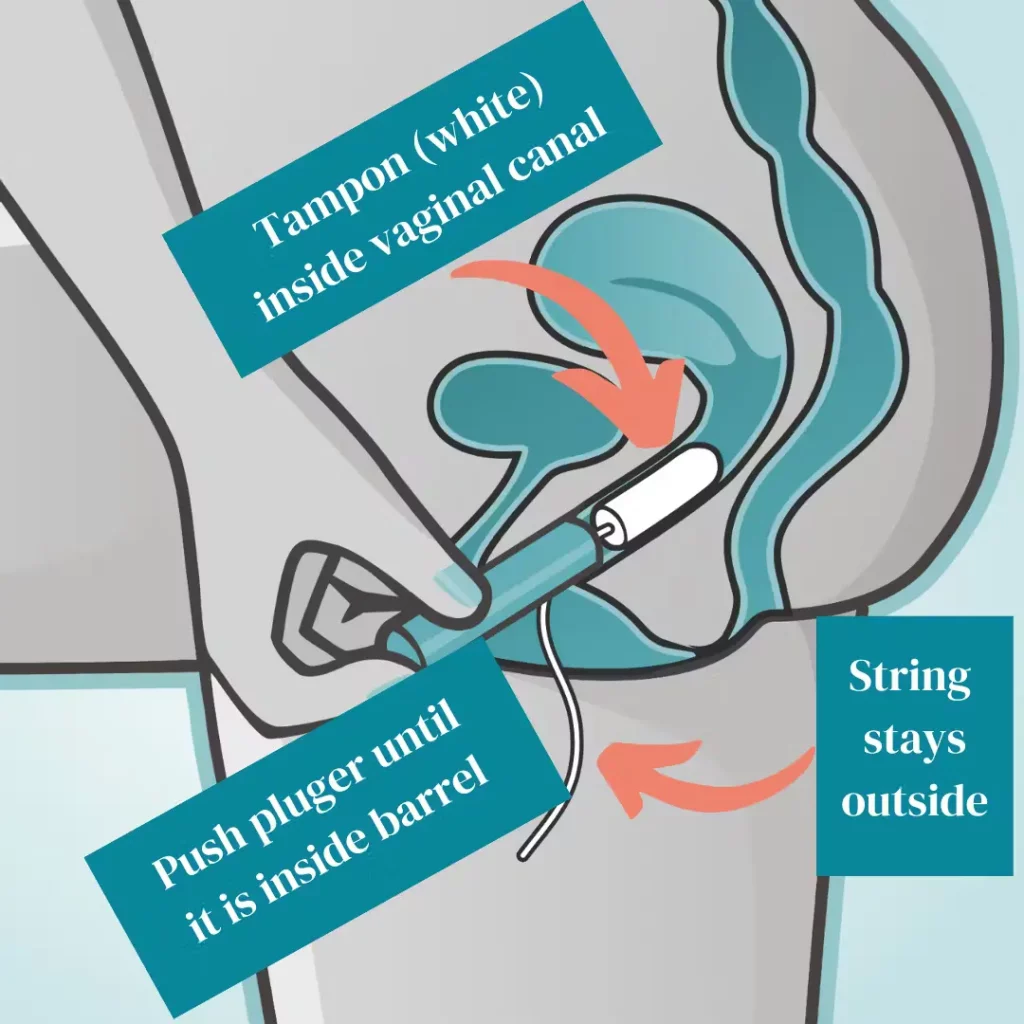
How To Use The Tampon: Step 4 Remove Tampon Applicator
Remove the applicator by pushing the tampon into the vagina. This is where playing with the applicator ahead of time can come in handy. You already know how the applicator works. Push the back of the applicator so it pushes the tampon out of the applicator and into your vagina. You should be far enough into the vagina so that the bulky cotton part of the tampon does not stick out, but you should not be so far into the vagina that you don’t have enough of a tampon string to pull. Once you have inserted the tampon, dispose of the applicator.
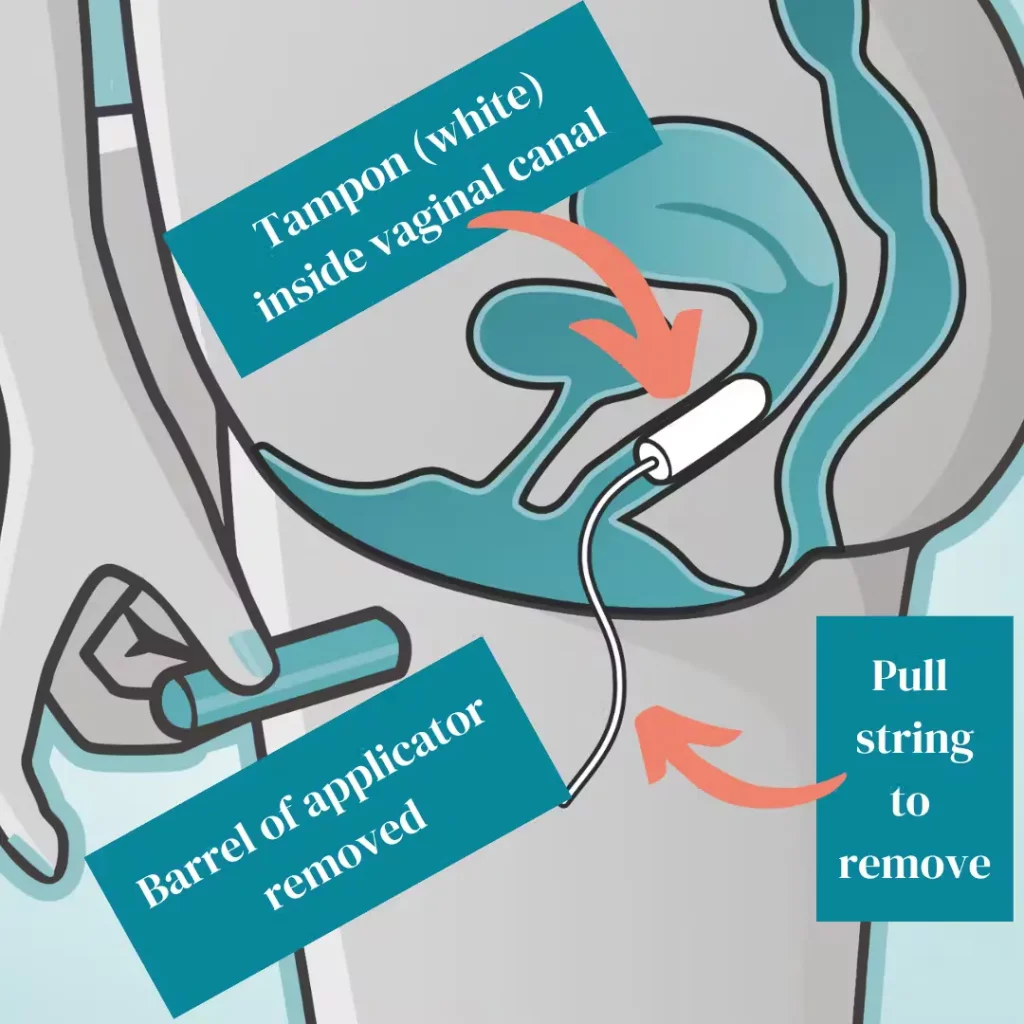
How To Use The Tampon: Step 5
It is also important to know how to take out a tampon. Sit down on the toilet and find the string of the tampon. Take out the tampon by slowly but firmly pulling on the string. The tampon, which is likely soaked in blood at this point, can be flushed into the toilet.
Tampon Safety
This guide is for educational purposes only, and is not a replacement for talking to your doctor. Remember that inappropriate tampon use is associated with a dangerous infection called Toxic Shock Syndrome (TSS). The general rule is to not use a tampon for longer than 4 to 8 hours and once the entire tampon is soaked in period blood you should remove it. For some people, this may take a couple of hours, and for others, it may take 5 or 6 hours. If the string of the tampon has become soaked in menstrual fluid, it is time to remove it. Do not leave a tampon in for longer than 8 hours. If you feel unwell, experience a sudden high fever, or experience any symptoms that are unusual, seek medical attention right away.
The most important thing is using tampons and other period products as directed by the instructions on the box and as by your medical doctor. If a tampon hurts, that means it is likely not inserted far enough or the tampon’s applicator has possibly caused some irritation during insertion. Take the tampon out and wait until you don’t feel any pain to try again. If the pain does not resolve within an hour you should see a doctor.
First Time Putting In A Tampon Essential Tips
If it is your first time putting in a tampon, it is a good idea to give yourself enough time and a private place. If you have someone that can stay on the phone with you who has done it before, this could be helpful as well. If you’re using a tampon with an applicator, have a few extra handy in case you push the tampon out of the applicator too early.
For the first time putting in a tampon, it is a good idea that you try it during the week. This way if you feel like you have done something incorrectly, you can always call your Ob Gyn office or head to urgent care. Getting care on a weekend or in the evening can be harder than during the week.
Remember that tampons are only supposed to be used for 4 to 8 hours at time. Using them longer can cause toxic shock syndrome. If you have heavy flow and feel the tampon leaking, you may need to change it more frequently than every 4 hours. It is important to set a timer with first time tampon usage. This way you remember to remove the tampon.
How To Insert A Tampon In Your Vagina: Summary
Many people use tampons in addition to menstrual pads and menstrual cups during their period. Tampons are a safe way to manage your period provided that you change your tampon at regular intervals. If you have a heavy flow period you may need to change your tampon every 3 hours, but if your flow is lighter you could go longer, like 6 to 7 hours.
Always change your tampon at after 7 to 8 hours. Do not leave the same tampon in for longer than 8 hours even if it is not soaked with blood. Not changing your tampon at regular intervals puts you at risk for Toxic Shock Syndrome. If you are soaking through your tampon in a few hours you will want to change it more frequently to avoid staining your clothing.
We discuss products we think are useful to people. If you buy something through our links, we may earn a commission. Remember to check with your personal physician to see if a product recommended is right for you.


